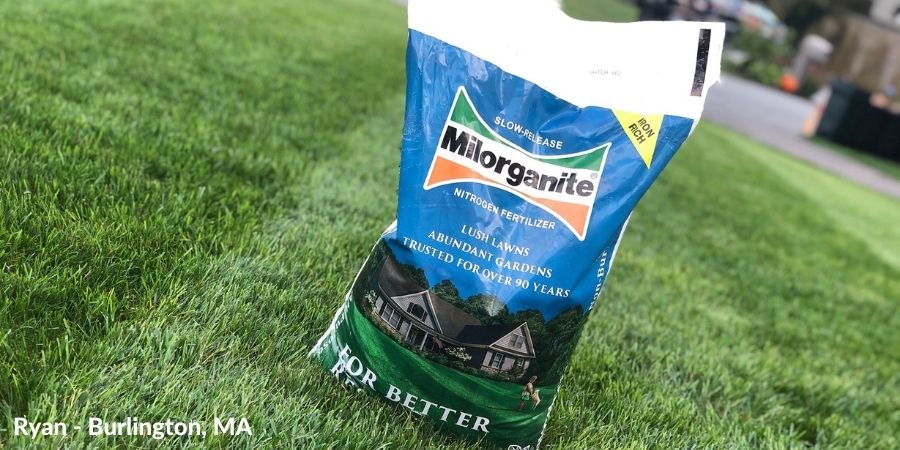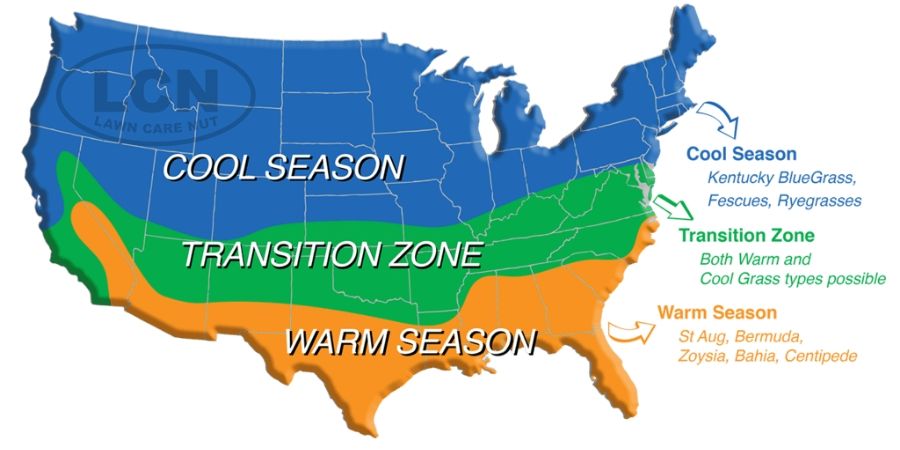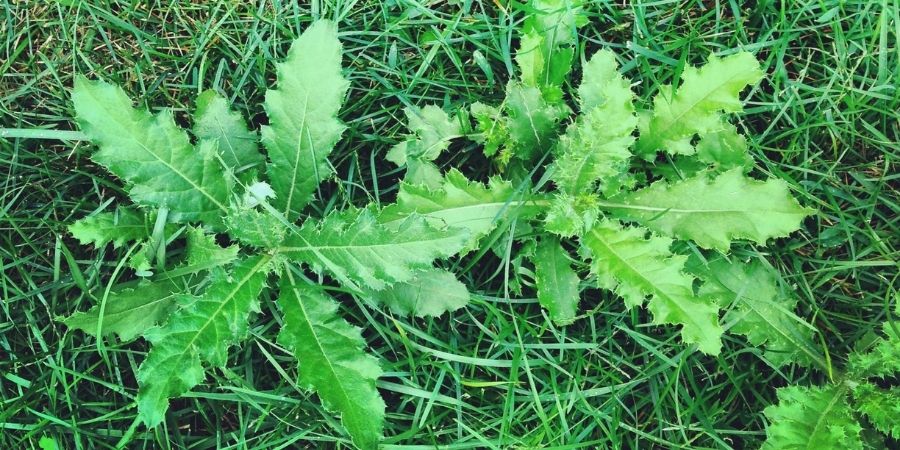Back to Lawn Care Basics
- Milorganite AgronomistApril 23, 2022
It’s time for spring lawn care, but it’s your first house, your first lawn or you’ve finally had it with how your yard looks. Where should you start?
There’s a lot you can learn about lawn maintenance, and it can be overwhelming. I’ve narrowed it down to the 10 most important lawn care tips you should know. I’ve included links throughout that will give you more in-depth information on each lawn care activity.
1. Purchase a Good Lawn Mower
A good lawnmower is the most important lawn-care tool you’ll need. Make sure the mower you purchase is comfortable for you to use. A self-propelled mower will make mowing easier and more enjoyable to use. If you have a limited lawn care budget, put it toward a good mower.
Keep your mower in good working order. Either do a DIY tune-up or take it in for maintenance. Try to take it to be serviced in the offseason, when there isn’t a backlog of mowers.
2. Mowing Tips for a Healthier Lawn
Mow Often & Mow the Correct Height
Grass should be cut at the optimum height for its species. Cut off no more than 1/3 of a grass blade at one time. If your lawn got away from you, you might need to mow 1/3 of the blade and then come back in a few days to cut the grass to its optimum height.
You might think you can save time by cutting your lawn really short, but that’s absolutely not the best option. Longer grass has deeper roots, which promotes a healthier lawn. Healthy grass that’s longer and thicker is your best defense against weeds. Grass crowds them out and weed seeds struggle to germinate in the shade. Scalping your lawn increases the risk of nutrient runoff.
Leaving Clippings on the Lawn
Instead of throwing away grass clippings, leave them on your lawn. They quickly break down and provide organic matter to condition the soil and nutrients for the grass. Grass clippings do not cause thatch, no matter what you might hear.
Sharpen the Blade
A sharp blade is essential to cleanly cut grass. Dull blades tend to rip and damage leaf blades, making the lawn more susceptible to disease. If you’re a DIY lawn care person, you can maintain the mower at home. Or follow the practice of one Milorganite customer who keeps a sharp blade on hand to change out with the dull blade. He can then sharpen the blade himself or take just the blade in for sharpening. It’s certainly easier than having to transport the entire mower.
3. Calculate the Area of Your Lawn and Create a Property Map
You’ll need to know the area of your yard when purchasing lawn care products, including fertilizer, weed and feed, herbicides, grass seed, and more.
To determine the area of your lawn, measure and multiply the length x width. If it’s easier, measure smaller areas of your lawn and add them together for the area of your entire yard.
The easiest way to calculate the area of your yard is by using Google Earth, which provides a satellite view of your home and yard. It has a tool to easily and quickly calculate the area of your yard. It probably won’t take you more than a minute or two to calculate.
Consider creating a map of your yard, which will come in handy. You can indicate problem areas, sunny/shady areas, and more. Use a notebook to jot down lawn care activities. You could forget exactly what you did last season that worked really well or ended in disaster.
The amount or “application rate” of Milorganite to use, for example, is 32 lbs. per 2,500 sq. ft. If the total area of your lawn is 5,000 sq. ft, you’ll need 64 lbs. If it’s 1,000 sq. ft, you need 12.8 lbs. (32 lbs. divided by 2,500 = .0128 lbs. per sq. ft. Multiple .0128 by 1,000 = 12.8 lbs.)

4. Your Lawn is Only as Healthy as the Soil
Getting a soil test of your yard may not seem like a lawn care basic, but it is. And it’s one that many (most?) homeowners ignore. Knowing the composition and health of your soil will help you determine what supplements your lawn may or may not need.
It’s important to only use the needed supplements at the correct rate. More isn’t better. Excess nutrients or chemicals can easily run off or leach into waterways. Too much of any nutrient may actually weaken your lawn instead of strengthening it.
You can find DIY soil test kits at big box stores or online, but I recommend contacting your local university extension office. They’ll be able to provide you with more accurate information from the soil test. They’ll explain how to take soil samples from your yard and how to interpret the results when you receive them. There may be a small fee for soil testing.
5. Identify the Grass Species in Your Lawn
Each grass species and variety have a particular way they like to be handled. They have differing requirements, from mowing height to nutrient needs. Another reason why it’s really important to know the variety/ies of grass in your yard is because there are herbicides that will also kill some varieties of grass. Check product labels carefully!

The region of the country in which you live will help narrow down the possible varieties of grass in your yard. You’ll find cool-season grasses in the North, where winters are cold. In the South, you’ll find warm-season grasses, which need the heat of summer to flourish. There’s a tricky “transition zone” in the middle of the country where local conditions may be suitable for either cool-season or warm-season grass varieties.
Yards in your immediate area likely have similar varieties like those in your lawn. If you have a neighbor with a picture-perfect lawn, they may be able to help identify the grass in your lawn. You can check out the Milorganite site for images and descriptions of the most common grass varieties.
If you’re still uncertain what grass varieties are growing in your lawn, contact your local university extension office. The experts at the extension offices really are an amazing source of information!
6. Grass Needs One Inch of Water per Week
Grass generally requires 1” of water per week from rain, irrigation, or a combination of both. Watering deeply encourages root growth. There are easy ways to determine how much you’ve watered and to what depth. Lightly sprinkling your lawn encourages a shallow root system and can weaken the grass, making it less drought-tolerant, among other things.
Water early in the day to allow grass to dry out, which helps prevent diseases from settling in. Cooler morning temperatures help prevent water from evaporating.
Check local ordinances for watering restrictions.
7. Fertilize your Lawn to Feed the Soil
Healthy soil is the key to healthier grass. Milorganite is composed of 85% organic matter, which nourishes your lawn and feeds the soil microbes. This improves the soil’s ability to grow grass.
All fertilizers, whether derived from organic sources or synthetic, will provide the nutrient analysis on the bag as N-P-K (N = nitrogen, P = phosphorus, K = potassium). Each number indicates the percentage of that nutrient in the fertilizer.
The nutrient analysis of Milorganite is 6-4-0: 6% nitrogen; 4% phosphorus; and less than 1% potassium. Milorganite also contains a minimum of 2.5% iron, which helps grass green-up.
The nitrogen in Milorganite is “slow-release,” meaning it is available to grass at a rate it can use. It reduces the risk of nutrient runoff or leaching.
Fertilize four times a year using our “holiday schedule.” If you only have time to fertilize once a year, it’s best done in early fall when cool-season grasses are actively growing and in late spring or early summer for warm-season grasses.
You can use either a drop or broadcast spreader. An inexpensive model will work just fine. We’ve provided the spreader settings, which you’ll need to know, for some of the most common spreaders. If your spreader isn’t listed, we have information on how to calibrate your spreader.
Always check local ordinances for fertilization and herbicide black-out periods.
8. Identify the Lawn Problem Before Applying Any Chemicals
I use chemicals on my lawn cautiously.
Please don’t just pick a product and hope it works! Before using any chemicals on your lawn, first, identify the problem so you can determine the best treatment option. A pest may cause what appears to be similar damage as a lawn disease. Treatment options for each clearly will be different.

If you’re treating for weeds, identify the weeds in your lawn to ensure the herbicide you use is effective in killing that specific weed. Read product labels very carefully. Some herbicides will also kill certain types of grass species!
If there aren’t many weeds, pull them by hand. If there are more and hand-pulling them isn’t an option, spot treat. If the lawn has an abundance of weeds, a full-lawn application of an herbicide will be necessary.
There are pre-emergent herbicides, which prevent weed seeds from growing. Keep in mind that pre-emergent herbicides also prevent grass seeds from growing! Read the label carefully so you know when you can apply the product if you’re also planting grass seed.
The best defense against weeds in your lawn is a thick, healthy lawn. It may take you a few seasons, but you’ll get there!
9. Aeration Rejuvenates Your Lawn
Aeration is a lawn maintenance activity that may seem to be beyond what a beginner should worry about, but it can really help rejuvenate your lawn. It’s something every homeowner should do, but most neglect.
Aeration loosens compacted soil and allows air, water and nutrients to more easily reach the root system. It can also help with drainage issues.
There are a couple of types of aerators: tine and core. Tine aerators poke holes into the soil, but can also compact soil. A core aerator, which I recommend, is more effective, because it removes 1” to 6” plugs of soil, depending on the aerator. Core aeration helps prevent thatch build-up.
Lawns with cool-season grasses are best aerated in fall, about four weeks prior to the first average frost.
If you can’t get to it in the fall, early spring is your next best time to aerate, after cutting the lawn twice. Warm-season grasses are best-aerated mid-spring to early summer.
You can rent an aerator at most lawn and garden centers. Ask a few neighbors to share the rental cost and ensure you have a truck and a few friends when picking up the equipment. Or call your local landscape company or garden center to aerate your lawn for you.
10. Use Reliable Sources of Lawn Care Information
Don’t feel like you have to go it alone to learn how to care for your lawn. There are a lot of resources available, including Milorganite’s website.
The Farmer’s Almanac is one reliable source of information for lawn care, as well as garden and landscape advice. For free, lawn care information the Almanac offers links to your state’s university extension offices for “on-the-ground advice” from local experts.
University extension offices offer a wealth of information at no cost, including the best varieties of grass that will thrive in your area, disease and pest identification, and other lawn care-related questions.
If you’re doing a search online for lawn care advice, make sure it’s from a reliable source. You might want to check out Allyn Hane, The Lawn Care Nut. His YouTube channel has dozens of videos on lawn care. He offers reliable information, breaks it down so it’s easy to understand, and entertains along the way.

